EXPLORING THE UPS AND DOWNS OF VERTICAL FARMING
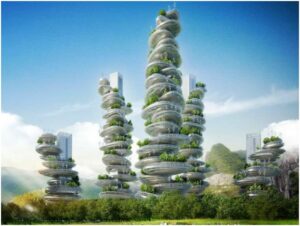
Vertical farming is a revolutionary concept that has the potential to revolutionize the food production industry. It is an innovative way of farming that uses vertical surfaces, such as walls and ceilings to grow crops, enabling the production of food in areas with limited space. This method of farming has attracted attention because of its potential to reduce water and energy consumption, mitigate environmental effects, and increase crop yields. Vertical farming can help to conserve resources, reduce emissions, and increase food production.
Vertical farming has emerged as a potential solution to the world’s growing food insecurity crisis. By growing crops in towering indoor farms, vertical farming promises to revolutionize the way we produce our food. With its potential to reduce water and land usage, and its ability to grow food in even the most inhospitable environments, the advantages of vertical farming are easy to see. However, before we fully embrace this new technology, it is important to consider the potential disadvantages and understand the ups and downs of vertical farming. In this article, we will explore the advantages and disadvantages of vertical farming, focusing on costs, efficiency, and sustainability.
What is Vertical Farming?
Vertical farming is the practice of growing crops in vertically stacked layers, usually indoors. By stacking the layers on top of each other, vertical farms can produce much more food in a much smaller space than traditional farming. This is because they usually build vertical farms in urban areas, where space is at a premium.
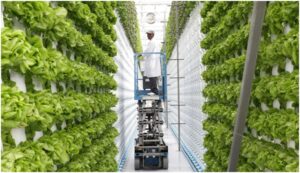
Vertical farming has several advantages over traditional farming. For one, it is much more efficient. By growing crops indoors, vertical farmers can control for environmental factors like temperature, humidity, and light, which can significantly increase yields. Vertical farming does not require the use of pesticides or other chemicals, which can damage to the environment. Finally, vertical farming can be done in places that would otherwise be unsuitable for agriculture, such as deserts and cities, allowing more people to have access to fresh, locally grown food.
Advantages of Vertical Farming
Vertical farming has many advantages that make it an attractive option for those looking to reduce their environmental footprint and increase their food production.
The first advantage of vertical farming is that it significantly reduces the amount of water and land required for growing crops. By growing crops indoors, vertical farmers can reduce water usage by up to 98%, as well as reduce the amount of land required for growing crops. This is especially beneficial in areas where water is scarce, or where land is expensive or difficult to come by.
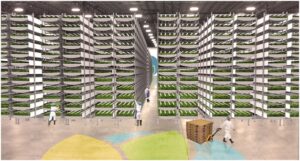
Vertical farming can significantly reduce the amount of carbon dioxide released into the atmosphere. By growing crops indoors, vertical farmers can reduce their carbon footprint by up to 70%. This reduction in carbon dioxide can help to mitigate the effects of climate change, helping to reduce global warming and improve air quality.
Finally, vertical farming can reduce the amount of waste produced by traditional farming. By growing crops indoors, vertical farmers can reduce the amount of fertilizer, pesticides, and other chemicals that are released into the environment. Additionally, vertical farmers can reuse the water they used to grow crops, further reducing their environmental impact.
Disadvantages of Vertical Farming
While the advantages of vertical farming are considerable, it is important to consider the potential disadvantages before fully embracing this new technology.
The first disadvantage of vertical farming is that it can be expensive to set up and maintain. While the initial costs of setting up a vertical farm are relatively low, the operational costs can be quite high, as the farms require specialized lighting and technology. Additionally, the cost of maintaining the farms can add up quickly, as the farms require a large amount of energy to run.
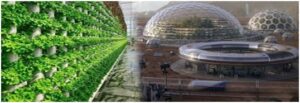
Another disadvantage of vertical farming is that it can be inefficient. While vertical farms can produce a large amount of food in a small space, the yield per square foot can be significantly lower than traditional farming. Additionally, the farms can be difficult to manage, as the plants require precise environmental conditions to thrive. This can lead to a large amount of trial-and-error, as the farmers attempt to find the best combination of lighting, temperature, and humidity.
Finally, vertical farming can be unsustainable in the long term. While the farms can reduce water and land usage, they require a large amount of energy to run, which can be difficult to source sustainably. Additionally, the farms can be difficult to scale, as the technology and resources required for running a large-scale farm can be cost-prohibitive.
Cost of Vertical Farming
The cost of vertical farming is one of the most important factors to consider when deciding whether to embrace this new technology.
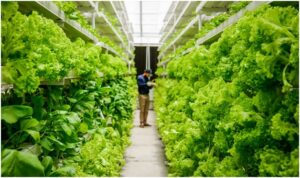
The initial cost of setting up a vertical farm is relatively low, as the major costs are the equipment and technology required to run the farm. However, the operational costs of running a vertical farm can quickly add up, as the farms require a large amount of energy to run. Additionally, the cost of maintaining the farms can be quite high, as the farms require specialized lighting and technology to produce the desired yields.
The efficiency of Vertical Farming
The efficiency of vertical farming is another important factor to consider when deciding whether to embrace this new technology.
While vertical farms can produce a large amount of food in a small space, the yield per square foot can be significantly lower than traditional farming. Additionally, the farms can be difficult to manage, as the plants require precise environmental conditions to thrive. This can lead to a large amount of trial-and-error, as the farmers attempt to find the best combination of lighting, temperature, and humidity.
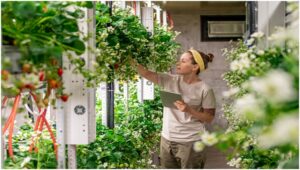
Finally, the efficiency of vertical farming can be affected by the type of crops being grown. While some crops, such as leafy greens, can thrive in a vertical farming system, other crops, such as root vegetables, can be more difficult to grow. Additionally, some crops may require more energy to grow, which can reduce the overall efficiency of the farm.
Economics of Vertical Farming
The economics of vertical farming is an important factor to consider when deciding whether to embrace this new technology.
The economic benefits of vertical farming depend on the location and scale of the farm. For example, in areas where land is expensive or difficult to come by, the reduction in land usage can be a major economic benefit. Additionally, in areas where water is scarce, the reduction in water usage can be a major economic benefit.
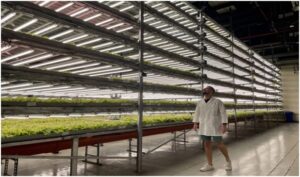
However, the economic benefits of vertical farming are not always clear-cut. For example, in areas where land and water are abundant, the economic benefits of vertical farming may be minimal. Additionally, the costs of setting up and running a vertical farm can be high, and the farms may not compete with traditional farms in terms of price.
Sustainability of Vertical Farming
The sustainability of vertical farming is another important factor to consider when deciding whether to embrace this new technology.
On the one hand, vertical farming can reduce water and land usage, which can help to reduce the environmental impact of traditional farming. Additionally, vertical farming can reduce the amount of waste produced by traditional farming, as the farms can reuse the water they use to grow crops.
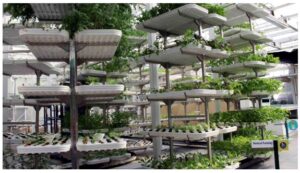
On the other hand, vertical farming can be unsustainable in the long term. While the farms can reduce water and land usage, they require a large amount of energy to run, which can be difficult to source sustainably. Additionally, the farms can be difficult to scale, as the technology and resources required for running a large-scale farm can be cost-prohibitive.
Examples of Vertical Farming
Vertical farming is being used all over the world to reduce water and land usage and increase food production.
In the United States, vertical farming is being used in cities like Chicago and New York to reduce the amount of land required for traditional farming. Additionally, vertical farms are being used in places like Singapore and Dubai to reduce the amount of water required for traditional farming.
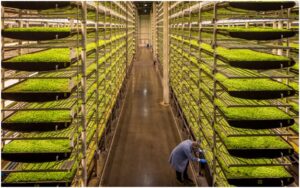
In Europe, vertical farming is being used in cities like London and Paris to reduce the amount of land and water required for traditional farming. Additionally, vertical farms are being used in places like Norway and Sweden to reduce the amount of energy required for traditional farming.
Finally, vertical farming is being used in countries like India and China to reduce the amount of waste produced by traditional farming. Additionally, vertical farms are being used in places like South Africa and Brazil to reduce the amount of carbon dioxide released into the atmosphere.
Potential Future of Vertical Farming
The potential future of vertical farming is an important factor to consider when deciding whether to embrace this new technology.
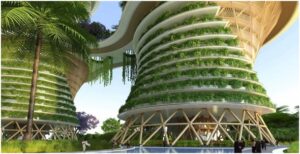
In the short term, vertical farming is likely to remain a niche technology, as the costs of setting up and running a vertical farm can be prohibitively high. The farms will remain small scale, as the technology and resources required for running large-scale farms can be difficult to find.
In the long term, however, vertical farming has the potential to revolutionize the way we produce our food. As the technology becomes more affordable and accessible, vertical farms could become the norm, replacing traditional farms and providing access to fresh, locally grown food in even the most remote areas. Additionally, the farms could help to reduce the amount of water and land required for traditional farming, helping to reduce the environmental impact of agriculture and mitigate the effects of climate change.
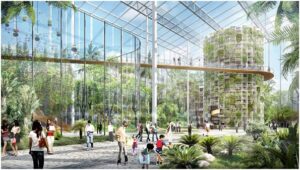
Conclusion
Vertical farming is a type of agricultural practice that has been gaining more and more attention in recent years. It involves growing crops on a vertical surface, such as a wall, in a greenhouse, or a warehouse. This type of farming has the potential to reduce the amount of land needed to produce crops, reduce the use of chemical fertilizers and pesticides, and reduce water consumption. While it seems like a win-win for the environment, there are also some potential downsides to vertical farming. It is important to consider the potential disadvantages before fully embracing this new technology. By understanding the costs, efficiency, and sustainability of vertical farming, we can better assess the potential of this new technology and decide whether or not to embrace it.
 Dr K. Jayanth Murali is a retired IPS officer and a Life Coach. He is the author of four books, including the best-selling 42 Mondays. He is passionate about painting, farming, and long-distance running . He has run several marathons and has two entries in the Asian book of Records in full and half marathon categories. He lives with his family in Chennai, India. When he is not running, he is either writing or chilling with a book.
Dr K. Jayanth Murali is a retired IPS officer and a Life Coach. He is the author of four books, including the best-selling 42 Mondays. He is passionate about painting, farming, and long-distance running . He has run several marathons and has two entries in the Asian book of Records in full and half marathon categories. He lives with his family in Chennai, India. When he is not running, he is either writing or chilling with a book.
